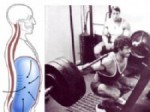By ADMIN on May 31, 2012
By ADMIN on May 15, 2012
By Dr. Michelle Basu Roy, Naturopathic Doctor at Athlete's Care at The Yorkville Club
Decreased sleep quality affects more than 70 percent of North Americans and although is it extremely common, it is abnormal and a sign of suboptimal health. Waking for merely three seconds or more at any point during the night is classified as interrupted sleep. Understanding how to interpret your sleep patterns based on neurotransmitter, hormonal and organ imbalances is essential to improving sleep quality.
Ideal sleep cycles occur in accordance with the sun cycle, where sun rise stimulates waking and sunset stimulates sleeping. Light triggers the release of cortisol, our body's stress hormone. Cortisol decreases in the afternoon as the sun sets leading to an increase in melatonin, our body's sleep hormone.
Problem 1 - Difficulty falling asleep
Difficulty falling asleep is often the result of a reversal of the cortisol curve, leading to an evening, as appose to the normal morning, cortisol peak. Chronic stimulus and stress from internet and cell phone use, nutrient void foods, chemical exposure from cosmetics, cleaners and pollution in addition to emotional stress lead to alterations in our body's secretion of cortisol. Essentially, our attention spans are constantly stimulated and cortisol is chronically elevated, leading to poor immune function, increased belly fat, anxiety and trouble falling asleep.
Solution
Magnesium: Magnesium is vital in hundreds of enzymatic processes in the body its deficiency is an epidemic due to poor soil quality. Magnesium deficiency, can alter cortisol activity, leading to disruptive sleep. Supplementing with Magnesium Taurate before bed may be helpful.
Inositol: Inositol has adaptogenic or balancing affects on cortisol, helping to better match cortisol to the normal cortisol curve. Inositol also shown to be effective at reducing anxiety related food cravings. Supplementing with Inositol should also be considered.
Neutral bath: Taking a bath that is the same temperature as your body can help reset your nervous system leading to a decrease in cortisol and a subsequent increase in melatonin.
Problem 2 - Waking up one to two hours after bed time
This likely indicates a problem with blood sugar regulation. Adequate balance of macronutrients, including dietary fats, protein and carbohydrate acts to stabilize blood sugar. Macronutrient requirement is dependant on body fat percentage, genetic predisposition, chronic disease and energy requirement. Certain individuals may benefit from carbohydrates prior to sleep to increase serotonin and promote rest.
Solution:
Avoid eating close to bed and consider taking a fibre powder with dinner to slow the release of glucose into the blood. Having your biosignature hormone profile accessed can also be helpful in determining your ideal macronutrient intake.
Problem 3 - Waking up between 1-3am
Waking up between 1-3am may be related to liver toxicity based on traditional chinese medicine (TCM). Our liver is our primary organ of detoxification and can be negatively affected by environmental toxicity, poor digestion, food allergens and emotional issues related to irritation and anger.
Solution:
Supporting optimal digestion and liver detoxification is essential. Some simple things to consider include drinking warm water with lemon juice on rising, consuming liver specific foods such as dandelion and tumeric and addressing emotions of irritation and anger. Supplementing with magnesium glycinate may also be helpful givens its affinity to reduce cortisol and support liver detoxification.
Problem 4 - Waking up between 3-5am
Waking up between 3-5am may be related to antioxidant stress from elevated cortisol, environmental toxicity and diets saturated with omega 6 and trans fats. According to TCM, the lung meridan is most active between 3-5am and can be affected by feelings of depression and sadness.
Solution
Increase antioxidant rich foods such as green tea, cocoa, thin skinned dark fruits and spanish wines and address emotional issues of sadness. Taurine is also a supplement to considered as it has been shown to decrease antioxidant stress and stimulate GABA, which acts to inhibit the nervous system and stimulate sleep.
By ADMIN on May 03, 2012
By Dr. Chris Klachan, Chiropractor at Athlete’s Care at The Yorkville Club
Assistant Instructor, McMaster University Contemporary Acupuncture Program
What is the first thing that comes to mind when you think of training your core? Do you think of washboard abs brought out from under their cover by thousands of crunches?
One can think of the core as those muscles that contribute to spinal stability. The whole idea of core stability is protect the spine while loading and to allow maximum transfer of force from lower limbs to the upper limbs and vice versa.
Core, inside out
There is a lot more to the core than meets the eye, or rather, can be seen by the naked eye.
The diaphragm is typically thought of as a muscle that assists in respiration. During inhalation, the diaphragm contracts pushing down on the abdominal cavity and expanding the lung cavity, pulling air in.
The transversus abdominus lies deep to the oblique muscles on the sides and keeps abdominal cavity from expanding outward.
The pelvic floor is an intricate network of muscles. When activated they prevent the downward expansion of the abdominal cavity.
 Research has shown that milliseconds before a movement, healthy subjects will activate their diaphragm and transversus abdominus. When lifting a heavy object, one should brace like they are going to take a punch activating all of the above muscles. The effect is like squeezing a balloon in the abdomen, adding to spinal stability.
Research has shown that milliseconds before a movement, healthy subjects will activate their diaphragm and transversus abdominus. When lifting a heavy object, one should brace like they are going to take a punch activating all of the above muscles. The effect is like squeezing a balloon in the abdomen, adding to spinal stability.
The ability to consciously activate the internal stabilizers should be present to progressing to more advanced core stabilization exercises. The following progression can get you there:
Abdominal bracing: Lying on your back with your feet flat on the floor, place your index fingers lightly on the abdomen an inch to the inside of the hip bone. Brace like you are going to take a punch in the abdomen and you should feel the transversus abdominus rise into your fingers. Try to hold this for 5 to 10 seconds while breathing and repeat 10 times.
 Dead bug: Lying on your back with a small towel rolled up comfortably under the small of your back; bring your hands and knees straight up with your knees bent to 90 degrees. Start by bracing and maintaining consistent pressure of your low back on the towel.
Dead bug: Lying on your back with a small towel rolled up comfortably under the small of your back; bring your hands and knees straight up with your knees bent to 90 degrees. Start by bracing and maintaining consistent pressure of your low back on the towel.
 Progress to moving opposite arm and leg out, up to 10 times while keeping consistent pressure on the towel.
Progress to moving opposite arm and leg out, up to 10 times while keeping consistent pressure on the towel.
Core, outside in
Think of the spine as a tower and the muscles that support it, as ‘guy-wires.’ If one of these ‘guy-wires’ is excessively strong while another is weak, injury is likely. Recent research has shown that excessive volume of flexion exercises like crunches and twisting exercises may not be beneficial for some, especially those that have experienced disc injuries in the low back.
Isometric spinal loading is an effective way to train core strength and endurance without taking away from the movement capacity of the spine. Isometric simply means that load is put through the muscle without changing the length of it. Once internal core stabilization is mastered, one can progress to the following isometric core exercises:
 Front Plank: With your elbows directly under your shoulders create a bridge between the elbows and either your knees (easier) or toes (harder). Brace your core, squeeze your glutes and pull your shoulder blades into your back pockets. Start by holding for 20 seconds, progressing to 90 seconds without discomfort.
Front Plank: With your elbows directly under your shoulders create a bridge between the elbows and either your knees (easier) or toes (harder). Brace your core, squeeze your glutes and pull your shoulder blades into your back pockets. Start by holding for 20 seconds, progressing to 90 seconds without discomfort.
 Side Bridge: Again, with your elbow directly below your shoulder and either your down side knee (easier) or both feet (harder) in contact, pull hips off the floor to produce a straight line from your nose to between your knees. Start by holding for 20 seconds, progressing to 90 seconds without discomfort.
Side Bridge: Again, with your elbow directly below your shoulder and either your down side knee (easier) or both feet (harder) in contact, pull hips off the floor to produce a straight line from your nose to between your knees. Start by holding for 20 seconds, progressing to 90 seconds without discomfort.
 Glute Bridge: With your feet flat on the floor a couple inches apart, brace and squeeze your glutes to raise your hips to form a straight bridge from your shoulder blades to your knees. Hold for 5 seconds with each repetition for a total of 10-15 repetitions.
Glute Bridge: With your feet flat on the floor a couple inches apart, brace and squeeze your glutes to raise your hips to form a straight bridge from your shoulder blades to your knees. Hold for 5 seconds with each repetition for a total of 10-15 repetitions.
The exercises discussed here are just the tip of the iceberg. A large number of modifications exist that both increase and decrease the muscular load.
... more